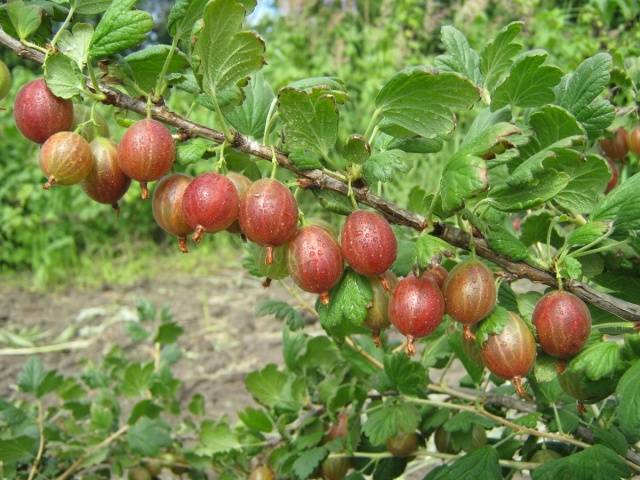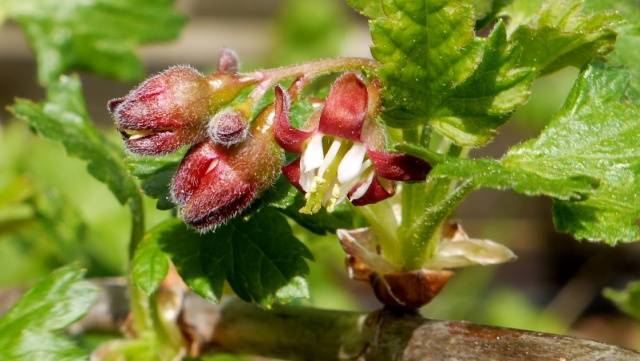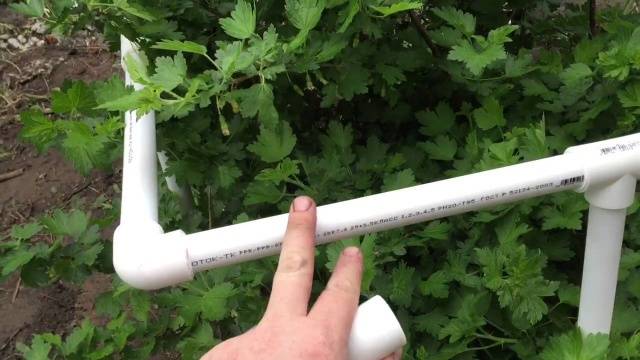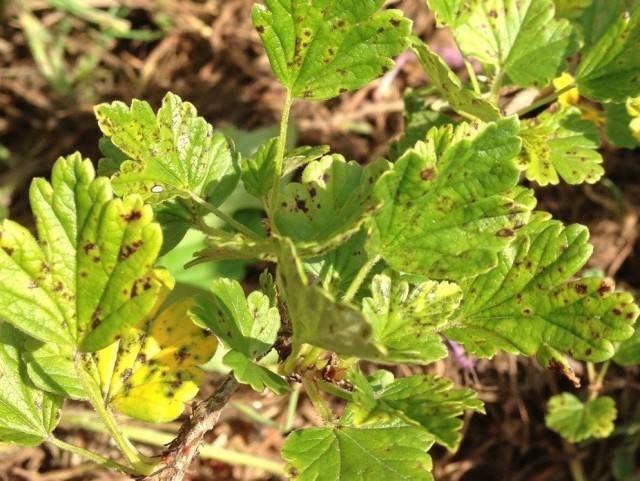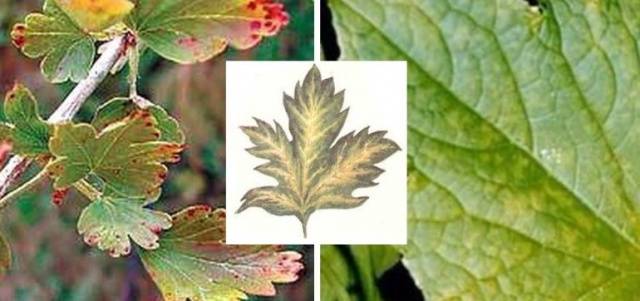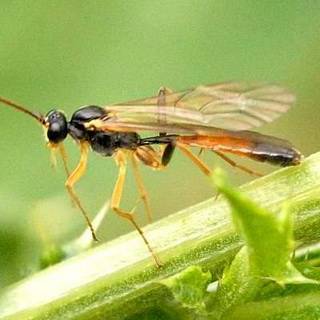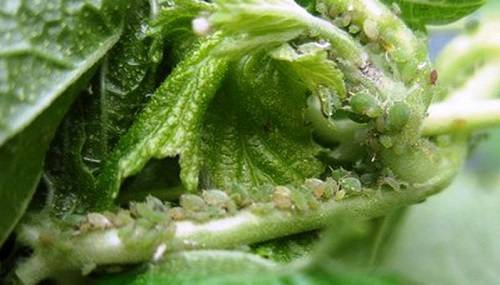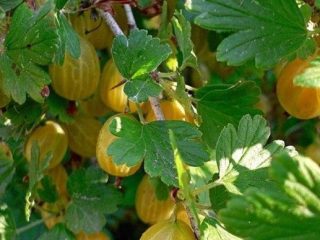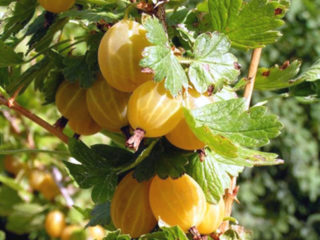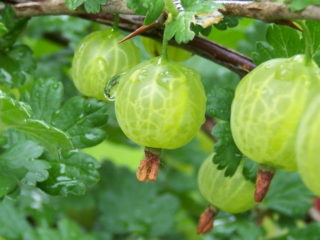Content
Garden owners in regions with harsh climates grow the harlequin, a winter-hardy gooseberry variety. The shrub is almost without thorns, the berries are painted in a rich reddish-brick color.
Breeding history of the variety
The Harlequin gooseberry variety with attractive red berries is the result of the selection work of the employees of the South Ural Research Institute of Horticulture and Potato Growing. Its author, V.S. Ilyin, crossed gooseberry varieties Chelyabinsk green and African. The gooseberry of a new variety has been tested in plantings since 1989, after 6 years it was included in the State Register with recommendations for cultivation in the Ural and West Siberian regions.
Description of the bush and berries
A medium-sized gooseberry bush Harlequin has straight branches, medium spreading. Weakly spiny shoots without pubescence, light green. Weak, short and thin single-type thorns are found only on some shoots in the nodes. Three- and five-lobed leaves with obtuse denticles are slightly larger than average, with a shallow edge, moderately wrinkled and slightly shiny. In overgrowing shoots, the base of the leaf is either slightly notched or straight. Small, brown buds with a pointed tip deviate from the branch.
In the inflorescence of the variety, there are 2-3 small bright flowers with long pink or light red bent sepals. The stalk is dark green.
Rounded-oval uniform berries of a gooseberry variety Harlequin of deep dark cherry color, in the phase of full ripening weigh from 2.7 g to 5.4 g. There is no pubescence on the skin of medium density. The pulp is sweet and sour, juicy, thick, starchy in the phase of full maturity. 100 g of gooseberry berries contain 24.4 mg of ascorbic acid. Berries contain 6.6% sugar, 3.3% acid, 12.3% dry matter. According to the All-Russian Scientific Research Institute for the Breeding of Fruit Crops, the tasting score of Harlequin gooseberries is 4.8 points.
Advantages and disadvantages
Dignity | disadvantages |
|---|---|
Self-fertility (38.9%) | Average yield compared to new varieties. For sufficient berry picking, 3-4 plants should be planted |
The branches of the Harlequin variety are slightly thorny | Mediocre berry taste, they are recommended to be processed |
Commodity attractiveness of berries | Late ripeness |
Harlequin resistance to frost and drought, easy maintenance | |
Powdery mildew resistance | Susceptibility to septoria |
Characteristics
Criteria | Data |
|---|---|
Yield | From 1 quarter2 harvested 0.4 kg of berries. At the variety testing stations, gooseberries produced up to 8 tons per hectare. On average, over the years of testing, from 1992 to 1994, the Harlequin variety showed a yield of 38.0 c / ha. |
Drought tolerance | Gooseberries tolerate short dry periods, but this variety requires enough moisture to form berries. |
Winter hardiness | Harlequin bush tolerates a temperature of -35aboutC. In frosty winters, the tops freeze slightly. Shoots recover well and bear fruit. Resistant to spring temperature changes |
Disease and pest resistance | The Harlequin variety is not affected by powdery mildew, it is prone to white leaf spot. Sawfly larvae eat delicate gooseberry leaves |
Ripening period | Late. In the European part of Russia, the Harlequin variety will ripen by the end of July, in Siberia - in August. |
Transportability | The dense structure of berries endures transportation |
Growing conditions
Gooseberry Harlequin is a viable and light-loving culture, the bush bears fruit for at least 15 years.
- The Harlequin variety is placed on spacious sunny areas;
- The bush does not develop well on heavy soils: sand is added;
- Areas in the lowlands and with stagnant water are not suitable for gooseberries.
Landing features
Harlequin gooseberries are planted in spring and autumn. Autumn planting at the end of September is preferable, since the buds of the bush wake up early. Gooseberries planted in spring can take a long time to take root and weaken. Shrubs of the Harlequin variety with predominantly erect shoots are placed at intervals of 0.8-1.2 m, providing sufficient insolation and ventilation. When choosing a seedling, pay attention to the presence of a branched root system. The shoots are healthy, without wounds on the bark.
- A hole is prepared with a width and depth of 0.7 m.
- Drainage from gravel, pebbles, small fragments of bricks is placed below and covered with sand.
- For the substrate, fertile soil is mixed with 8-10 kg of humus or compost, 5 kg of sand on heavy soils, 200 g of wood ash and 100 g of nitrophoska or a mineral complex for berry bushes.
- Gooseberry roots are laid out on a mound of the substrate at a depth of 60 cm and the root collar is sprinkled.
- The soil is tamped, watered, and mulch from humus or peat is applied on top.
Care rules
The undemanding Harlequin gooseberry variety needs minimal care.
Support
After planting, a support is made for the branches of the bush. The structure is built from wooden beams, metal-plastic pipes, acquiring the necessary fasteners. It prevents branches from accidentally tilting towards the ground.
Top dressing
Harlequin gooseberry bushes are given mineral and organic dressings. They are used after watering.
- Immediately after the snow melts, 200 g of wood ash and 40 g of nitrophoska are poured onto the wet ground in the trunk circle.
- Before flowering, fertilize with 500 g of mullein or 200 g of bird droppings, diluted in 10 liters of water. To organics add 50 g of potassium sulfate and ammonium sulfate. For young bushes, 3 liters is enough, for adults it is twice as much.
- The same mixture or nitrophobic fertilizer is fertilized in the phase of ovary formation.
- In the fall, every 2-3 years, 10-15 kg of humus is poured under the bush.
Pruning bushes
From the Harlequin gooseberry bush in the spring or autumn, remove old branches that have reached 5 years. The rest of the branches are cut from the top by 10-15 cm. Damaged, frozen shoots or shoots heading into the bush are removed.
Reproduction
The Harlequin gooseberry variety is propagated by layering and dividing the bush.
Near a healthy branch, which is located low, dig a groove 10-15 cm deep and lay the branch using garden hairpins. The place of the layers is constantly watered, stimulating the formation of roots and shoots. Sprouts that have reached 10-12 cm are spud up. In September, the seedlings are moved.
In the fall, a large bush is dug up and the root is divided with a sharp ax. The transplanted delenki are spud.
Preparing for winter
Having collected the fallen leaves, they dig up the soil up to 10 cm. Pour a layer of 12 cm of humus or peat, which is removed from the bush in the spring. Sawdust is sometimes added to humus.
Fight disease
Disease | Signs | Control measures | Prophylaxis |
|---|---|---|---|
White spot or septoria | Leaves have grayish spots with dark edging. Later, black dots with spores form on the spots. Leaves curl, dry, fall off | The affected leaves are removed. Treatment with 1% Bordeaux liquid before and after flowering, then after 2 weeks and after picking berries | Fallen leaves are removed in autumn. In early spring, 40 g of copper sulfate are sprayed per 10 liters of water. Boron, manganese sulfate, zinc, copper are introduced into the soil under the bushes |
Anthracnose | Dark brown spots on the leaves that dry out and fall off. Young shoots grow poorly. The berries are sour. The harvest is declining | Spraying with 1% Bordeaux liquid, as with septoria | Fallen leaves are removed. In spring, they are treated with copper sulfate |
Gooseberry mosaic viral | Patterned yellow spots along the leaf veins. The leaves grow small. Shoots do not grow, yield falls | There is no cure. Bushes are removed and burned | Healthy seedlings. Fight against aphids and ticks that spread the disease |
Pest control
Pests | Signs | Control measures | Prophylaxis |
|---|---|---|---|
Gooseberry sawfly | The appearance of small, up to 6 mm, insects with a shiny black body and membranous wings. Larvae, greenish caterpillars, eat leaves. The berries are small, the bush weakens, does not tolerate winter | Manual collection of caterpillars, extracts of wormwood, garlic, tobacco | Digging the soil in the fall, loosening in the summer, collecting fallen berries |
Aphid | Colonies at the tops of the shoots, the upper leaves are twisted into a ball | Processing: Spark, Fufanon, infusions of soap, garlic | Boiling water is poured over the bushes in early spring |
Conclusion
The thornless gooseberry variety laid the foundation for the development of similar varieties. The Harlequin bush itself also remains popular. Loosening the soil, watering, top dressing, spring prophylaxis will give the expected harvest.
